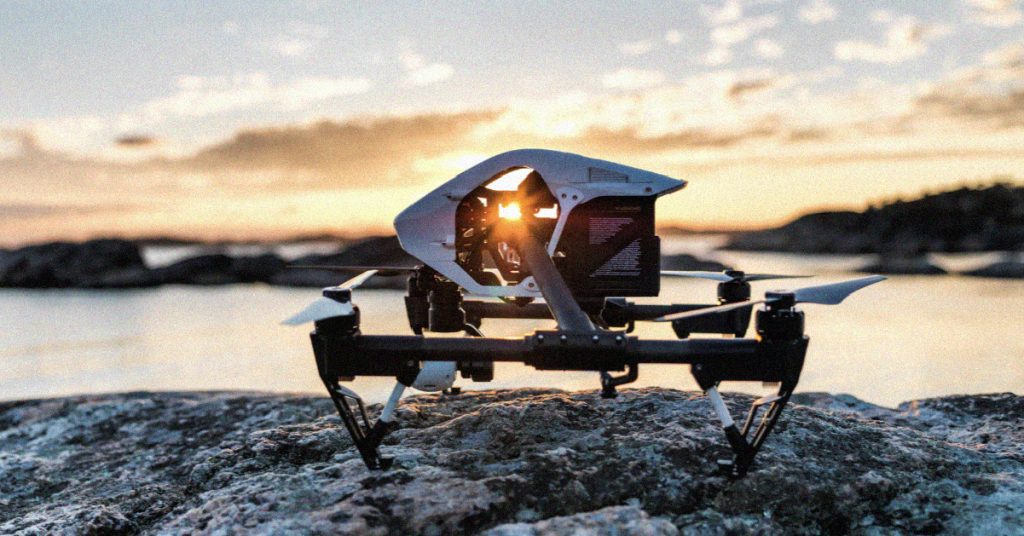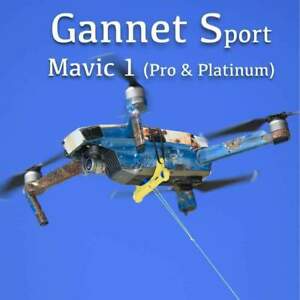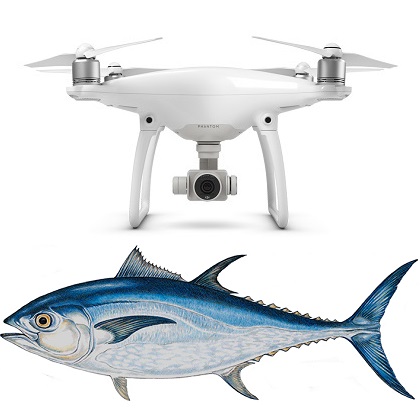
Cameras are some of the most valuable accessories when it comes to drone fishing. These will help you see things you can't see on land, such as structure, bait fish balls, and other details. The drone can also capture images of the water's color, depth and location to help you pinpoint the best spots for fishing. A fishing drone camera is a must have if you want to catch more fish! Find out more about the advantages of a drone-fishing camera.
Powerdolphin
A PowerDolphin drone might be the best option for you if you are thinking about buying one. The PowerDolphin can also take underwater footage in under a second, giving you unique insight into what lies below. The PowerDolphin remote controls can also be used to control it. The action will be recorded by the drone's camera onto a Micro SD Card. The camera can save up to 12MP photos as well as 4K videos. It is easy-to-use and packs a powerful rechargeable battery.
If you've ever fished in shallow water and had trouble locating fish, the PowerDolphin can help you find them. It will keep track of their location, size, depth, and even whereabouts. The PowerSeeker allows the user to track the entire process from the drone dropping the bait. This can be done by holding the PowerSeeker in your hands or inserting it into the drone. The PowerDolphin also includes an underwater sensor called PowerSeeker that provides data on the bottom composition, temperature, as well as fish population.
Upair
UPair made the FPV video-telescope helicopter the best tool for fishing. The drone has a 7 inch screen and can fly for around 20 minutes. It can capture high-quality, ethereal film and also features a GPS that pinpoints exact locations. In the event that the GPS signal goes out, the drone will return to its base point. It also features a button that allows users to return home. This eliminates the possibility of losing connection to their remote controls.
The Upair Air drone is also great for fishing. The Upair Air is a great drone for fishing thanks to its long range and HD camera. The drop-rigger clip allows you to release your catch directly from the water, without having it land. It's also very affordable and ideal for drone owners who are starting out. This model is affordable for beginners, and there are many other options for fishing with your Drone.

Autel X Star Premium
The Autel X Star Premium drone has been a popular choice. The lightweight, waterproof, and powerful drone can capture amazing photos and videos of your surroundings. It can adjust its camera easily to capture breathtaking aerial shots using its three-axis stabilizer. Intelligent flight capabilities allow you to customize the drone's flight modes. The drone can be flown in multiple directions, including hovering at a point or interest to capture amazing photos and videos.
The Autel Premium drone X-Star Premium is not intended for fishing. However, it is a very affordable drone with excellent specs. It comes with a transmitter, two sets of propellers, and a gimbal release clip. The device can be outfitted for fishing with a set of extra batteries and droprigger release clips. You can also purchase a separate camera release clip if you intend to fish from the drone.
Autel Yuneec Typhoon HC Pro
Autel has developed several useful accessories to the Autel Yuneec Typhooon HD Pro drone, such the PowerRay imaging device. This device was created to allow you to observe fish behavior. The drone's impressive battery life can last up to 30 mins in a storm. Depending on the strength of the storm, the drone's battery may last up to an hour or more. After a full charge, the battery will last for approximately two hours. Two chargers are available.
The Typhoon Hs drone has excellent cameras with 4K shooting capabilities. You can see a lot of water thanks to its wide rim. The control stick is solid and fits comfortably in the hand. It has a 1,000-meter flight range and takes between 20 to 25 minutes. This device is perfect for fishermen who love to fly over water bodies and catch large quantities of fish.
Yuneec Typhoon H
Get the right accessories for your Typhoon H to record the best fishing trip. These accessories can be purchased online or on the Yuneec site. You can choose from a range of features and prices depending on what type of footage you are looking to capture. The Typhoon H's camera system is impressive. It can record 4K UHD video at 60 frames/second, and 20 megapixels of still images. The drone can be powered for up to 28 minutes by the battery.

Additional accessories that are important include landing passes, landing pads and landing boards. Landing pads are useful when you want to go for off-shore surf fishing on a beach. For keeping the sand out, landing passes are helpful. Typhoon H Pro has the ability to carry a camera or gimbal. The Typhoon H Pro can be attached to the payload attachment if you have lots of equipment.
FAQ
What is the main difference between a quadcopter or a helicopter?
A quadcopter is a four-rotor helicopter that flies like a traditional helicopter. It has four rotors that rotate independently. The quadcopter's quadcopter counterpart, the hexacopter, has six instead of four. Hexacopters are stabler and more maneuverable than quadcopters.
Is it possible to fly my drone in my backyard?
Yes! These are called UAVs (unmanned aircraft vehicles). There are many types of drones on the market today, including small quadcopters and large fixed-wing aircraft. The FAA recently updated its rules regarding commercial UAV use. You can now legally fly them to business purposes. You should be aware, however, that UAVs flying near airports can cause interference with air traffic control systems. To operate one, you will need to obtain permission from the local authorities.
What is the law on drones flying over private property?
The FAA has recently issued new rules for commercial drone flights. These rules apply to UAVs with a weight less than 55lbs and that fly at a height of below 400 feet from the ground. Commercial operators must register with the FAA and obtain a license from the agency. When operating in restricted areas or near airports, they will need to obtain permission from the local authorities.
What laws are there regarding drones flying?
The Federal Aviation Administration (FAA), regulates drone operations in the United States. You must first obtain a FAA certification before you can operate a drone commercially. After that, you must pass an exam and complete a course to learn piloting skills. You will then need to pay an agency fee.
Statistics
- According to ZipRecruiter, the minimum hourly wage of drone pilots is $20. (thedroneu.com)
- According to Indeed, a drone pilot gets paid $25.73 per hour on average in the US. (dronesgator.com)
- Research and Markets predict a growth rate of 51.1% over the next five years. (thedroneu.com)
External Links
How To
How to Fly Drones at a Beginning Level
A drone is a remotely-controlled aircraft that is used for aerial photography and surveillance. Drones are a technology that has been around since World War II. DJI's Phantom quadcopters became commercially available in 2010. There have been many drones made since then. These range from beginner-friendly drones like Parrot AR Drone 2.0 to more advanced multi-rotor craft like DJI Mavic Pro.
There are many options for flying a drone.
-
Remote control – This technique uses a control device attached directly to your hands that allows you steer the drone around its flight path. There are two types of controllers available: joysticks and on/off switches.
-
Manual Control - Using a smartphone app, this method allows users to remotely operate the drone via GPS coordinates. You must keep track of the location where you want the drone to go and follow the instructions from the app.
-
Autonomous Flight - This method involves leaving the piloting duties to the drone itself. The drone is able to fly autonomously, without the need for human intervention. It must have a builtin camera, sensors capable of taking images and data to enable autonomous flight.
-
Triggered Flying - This method works in the same way as manual control. However, the pilot has to manually set up a route for the drone and it follows that route until reaching the endpoint. After the program is complete, the drone automatically returns to the ground.
-
Landing Gear – Some drones are equipped with landing gear, which allows them to safely land if they lose power during flight.
-
Goggles – Pilots often wear goggles while flying to keep themselves safe from any debris.
-
Camera - Some drones can be equipped with cameras which enable you to capture photos from the sky.
-
Obstacles. Some drones can have obstacle avoidance technology that stops them from hitting obstacles.
-
Speed - Some drones can travel at speeds over 40 mph.
-
Battery Life: Most drones have a battery life of between 20 and 30 minutes depending on how many power sources you use.
-
Some drones are capable of traveling up to 30 miles depending upon their make and model.
-
Power source - Some drones need an external power source, while others use internal batteries.
-
Weight – Some drones are less than one pound, while other models can be up to four pounds.
-
Size - Drones range from small devices that fit in one's palm to large crafts that weigh more than 50 pounds.
-
Price - High-end drones can go for thousands of dollars, while low-cost models start at $100.